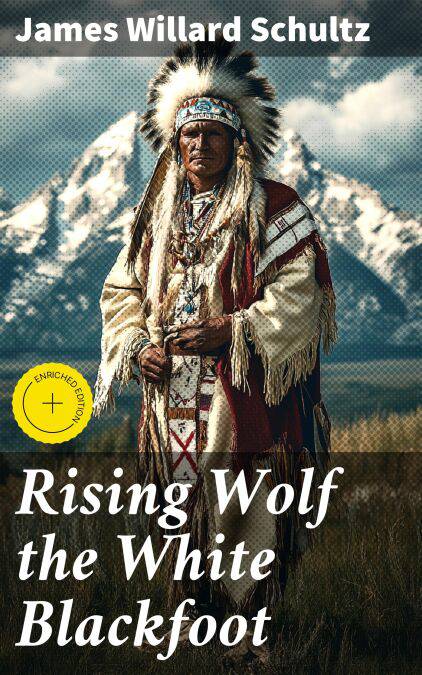
- Afhalen na 1 uur in een winkel met voorraad
- Gratis thuislevering in België vanaf € 30
- Ruim aanbod met 7 miljoen producten
- Afhalen na 1 uur in een winkel met voorraad
- Gratis thuislevering in België vanaf € 30
- Ruim aanbod met 7 miljoen producten
Zoeken
Rising Wolf the White Blackfoot E-BOOK
Enriched edition. A Captivating Tale of Adventure and Survival in the American Frontier
James Willard Schultz
E-book | Engels
€ 1,99
+ 1 punten
Omschrijving
In "Rising Wolf the White Blackfoot," James Willard Schultz presents a compelling narrative that intertwines autobiography with the rich tapestry of Native American culture, specifically that of the Blackfoot tribe. The book employs a vivid and evocative literary style, drawing upon an ethnographic lens that seeks to bridge the gap between indigenous experiences and settler perspectives. Schultz's writing is imbued with a sense of authenticity, as he reflects on his life experiences among the Blackfoot, who bestowed upon him the name "Rising Wolf." This work situates itself within a broader literary context that explores the complexities of identity, cultural assimilation, and the preservation of indigenous traditions during a time of substantial upheaval in North America. James Willard Schultz was an early 20th-century author, explorer, and ethnographer whose deep affinity for the Blackfoot people shaped his life and work. His firsthand experiences living among and learning from the tribe inform the poignant narratives found in his writings. Schultz's unique position as a white man immersed in Native culture allows him to present an insider's perspective, cultivating mutual respect and understanding that is often absent from contemporary portrayals of indigenous peoples. "Rising Wolf the White Blackfoot" is a profound exploration of cultural identity and kinship that is essential reading for anyone interested in Native American history, ethnography, or multicultural narratives. It not only enriches our understanding of the Blackfoot tribe but also challenges readers to consider their own cultural narratives in the broader context of American history.
In this enriched edition, we have carefully created added value for your reading experience:
- A succinct Introduction situates the work's timeless appeal and themes.
- The Synopsis outlines the central plot, highlighting key developments without spoiling critical twists.
- A detailed Historical Context immerses you in the era's events and influences that shaped the writing.
- A thorough Analysis dissects symbols, motifs, and character arcs to unearth underlying meanings.
- Reflection questions prompt you to engage personally with the work's messages, connecting them to modern life.
- Hand‐picked Memorable Quotes shine a spotlight on moments of literary brilliance.
- Interactive footnotes clarify unusual references, historical allusions, and archaic phrases for an effortless, more informed read.
In this enriched edition, we have carefully created added value for your reading experience:
- A succinct Introduction situates the work's timeless appeal and themes.
- The Synopsis outlines the central plot, highlighting key developments without spoiling critical twists.
- A detailed Historical Context immerses you in the era's events and influences that shaped the writing.
- A thorough Analysis dissects symbols, motifs, and character arcs to unearth underlying meanings.
- Reflection questions prompt you to engage personally with the work's messages, connecting them to modern life.
- Hand‐picked Memorable Quotes shine a spotlight on moments of literary brilliance.
- Interactive footnotes clarify unusual references, historical allusions, and archaic phrases for an effortless, more informed read.
Specificaties
Betrokkenen
- Auteur(s):
- Uitgeverij:
Inhoud
- Aantal bladzijden:
- 108
- Taal:
- Engels
Eigenschappen
- Productcode (EAN):
- 8596547794028
- Verschijningsdatum:
- 29/12/2023
- Uitvoering:
- E-book
- Beveiligd met:
- Digital watermarking
- Formaat:
- ePub

Alleen bij Standaard Boekhandel
+ 1 punten op je klantenkaart van Standaard Boekhandel
Beoordelingen
We publiceren alleen reviews die voldoen aan de voorwaarden voor reviews. Bekijk onze voorwaarden voor reviews.








